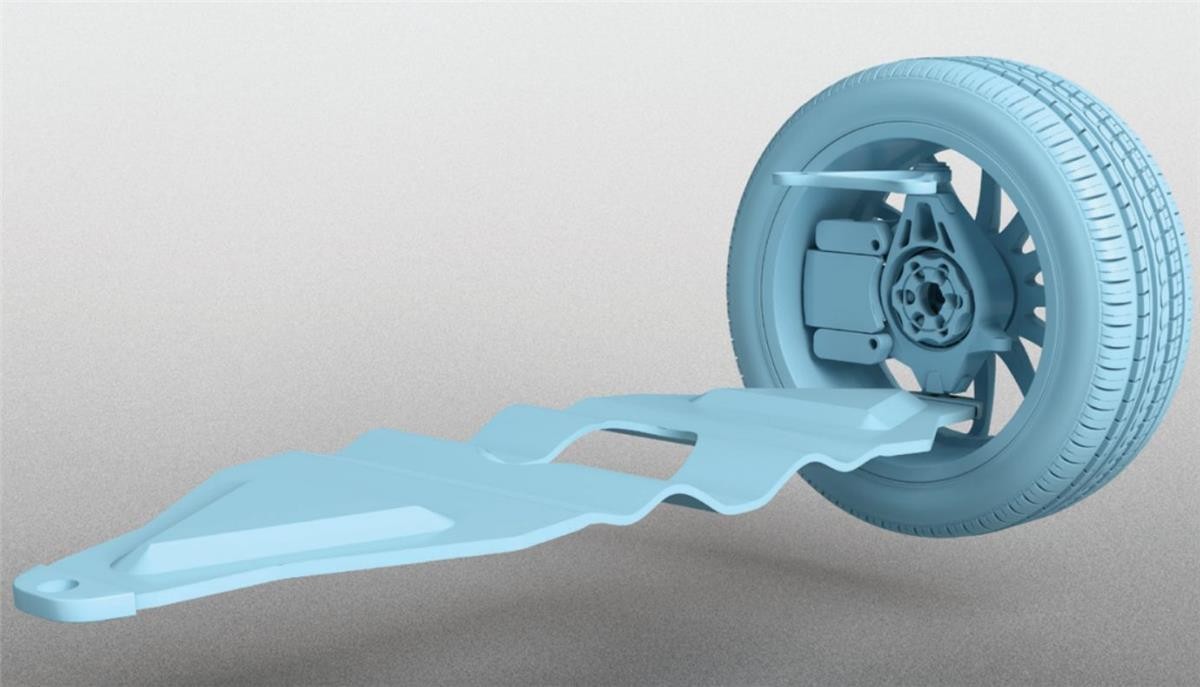Lightweight cars reduce climate impact from traffic
The SÅNÄTT project aimed at establishing novel collaborations when designing new ways of manufacturing cars with reduced vehicle weight and carbon footprint. Cooperation between stakeholders in the automobile industry and academia contributed to new knowledge and methods for product development.

The challenge
Creating cars that emit less CO2 are needed for the automotive industry in order to comply with changes in legislation and continue to be competitive in the market. Lightweight solutions demand less fuel for transportation, which in turn will lower climate emissions.
With regards to the innovation process, major decisions in the product development chain of the automotive industry is currently dominated by the original equipment manufacturer (OEM) and the tier one companies who are direct suppliers to the OEMs. The tier one companies are often responsible for large infrastructural investments which affects decisions, and can sometimes hinder the implementation of innovations.
The innovation
Innovative ways of collaboration, lightweight products and optimized material use were the aims and challenges of the SÅNÄTT project. The project targeted cost effective options to reduce vehicle weight by 20-40%, striving to achieve a common goal of producing more sustainable automobiles while improving the product development process of the automotive industry.
Thirty-nine partners from the industry and academia worked together in different sub-projects to address the challenges. Their novel approach allowed all suppliers and academia to take part in the product development process from the very beginning. Together, they developed design methods to decrease vehicle weight, for instance by strengthening the windscreen using chemically tempered glass to enable a thinner and thus lighter glass. The weight of the chassis and underbody of the car was reduced by incorporating the floor into the support system. Additionally, a coating for thermal reflection of sunbeams was added to reduce heat absorption and energy consumption by the climate control system.
The production process was made more effective by integrating different parts into the vehicle roof, for example solar cells and ventilation fans. Integrated solar cells can also help in cooling down the car by producing enough energy to regulate the temperature within the car. At the same time, carbon fibres in the roof construction and a passive ventilation system helped to downsize the climate control system which ultimately reduces fuel consumption. In total, the project succeeded in a weight reduction of the entire vehicle by almost 50%.
Almost 50% of the project SÅNÄTT (€3.56 million of a total of €7.23) was financed (public grant partial funding for R&D) by the Swedish innovation agency Vinnova through the Strategic Vehicle Research and Innovation (FFI) program, which is a partnership between the government and automotive industry in Sweden
Why did it work?
SÅNÄTT was first initiated by SAAB Automobile AB in 2010 in order to achieve a new method for product development that could fulfil the need of more collaboration with other actors in the automotive industry. When the company went bankrupt in 2011 the original equipment manufacturer (OEM) role for SÅNÄTT was replaced by Volvo Cars, reinforcing the project. The project had in its initial state been recognized as a way to improve the climate of and cooperation within the Swedish automotive industry, especially by the Scandinavian Automotive Supplier Association (FKG) and Innovatum, an organization sponsored by the Swedish government intended to connect industries and academia, which supported the project.
The strong cooperation between suppliers, manufacturers and academia was the key factor that drove the project to success. Through the novel approach a creative project environment was developed, making use of each partner’s skills and experience. The innovative context of the cooperation stimulated networking and new partnerships between the various experts, thereby enhancing the cooperation in the automotive sector.
Further deployment
The project SÅNÄTT resulted in a new approach for collaboration within the automotive industry and a virtual visualisation of a prototype with strongly reduced vehicle weight, thus contributing to lowering emissions and achieving energy and environmental objectives. Hence, the project is estimated to be level 7 on the TRL scale. Further, the project has led to patents for some of the developed concepts, a start-up company has sprung from the collaboration and several partners have teamed up in an application for a new, EU-funded project.
Links:
The Website
